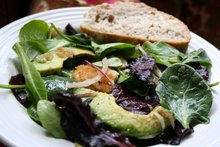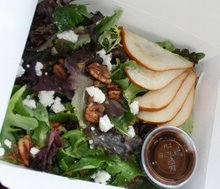Twenty thousand dollars. The number floored us both. We knew that these systems cost a lot of money, but neither one of us imagined that purchasing and installing a Class 1 hood/ventilation system would set us back this much. Fortunately for us we know people who have been through this process, and we were learning of this grotesque figure now while we are still in the planning stage, rather than further down the line when we are trying desperately to stretch every penny we have. Twenty thousand dollars! Neither of us was quite sure what to make of this number, but we knew that we would have to seek other alternatives. Lucky for us once again, our knowledgeable friend had a suggestion that might possibly be the answer to our newest hurdle: go electric.
It seemed simple…
If gas range = hood, and hood = $20,000, then no gas range must = no hood, which in turn should = $0 spent towards a ventilation system. We thought it over for a while, trying to come up with a reason why this new idea would not work. It didn’t take long before we both realized that our friend might be on to something. An all electric commercial kitchen could prove very functional, while simultaneously lowering our start-up costs. Without disclosing too much about our menu we can tell you that we do not plan to serve any items which necessitate sauté, which in turn negates our need for gas power. The newest question: Could we build a totally electric commercial kitchen?
As soon as we returned home we untagged the Wolf ranges from our ‘bookmarks’ and began researching electric commercial restaurant equipment. Much to our delight we found that not only was there a great selection of electric equipment on the market, creating an all electric kitchen could save us money in addition to that which we would save by not having to purchase and install a hood.
On to the next question: What impact would an electric kitchen have on the environment? This one was hard to gauge. Since we first conceptualized our restaurant we have always imagined that we would make efforts towards being environmentally sustainable, both in our construction and throughout our day to day operations. Relying solely on electricity is certainly not the greenest way to power a restaurant. However, we realized that in effort to offset our potential electrical gluttony we could purchase electricity that has been generated through wind power.
The more we thought about it the more it began to appear as though it would work. Locally grown seasonal ingredients highlight our menu, and we believe that many of these ingredients speak for themselves when it comes to flavor. The intention of our recipes is to emphasize the many wonderful qualities already inherent in the foods we cook with. And with the right equipment, we think we will be able to do just that.































































































































































1 comment:
hey guys.
glad to see your still hot on the heels of restauranteurism.
in terms of heat though--i'd not discount the glory of the flame. whilst electro-tools might help your food cost, cooking delicatly (especially vegetables) might require more than electric equipment has to offer. even the best induction stovetops (which are a big step up from vulcan foodservice) can be really frustrating to work with. my 2 cents.
keep up the good work!
hearts,
alex
Post a Comment